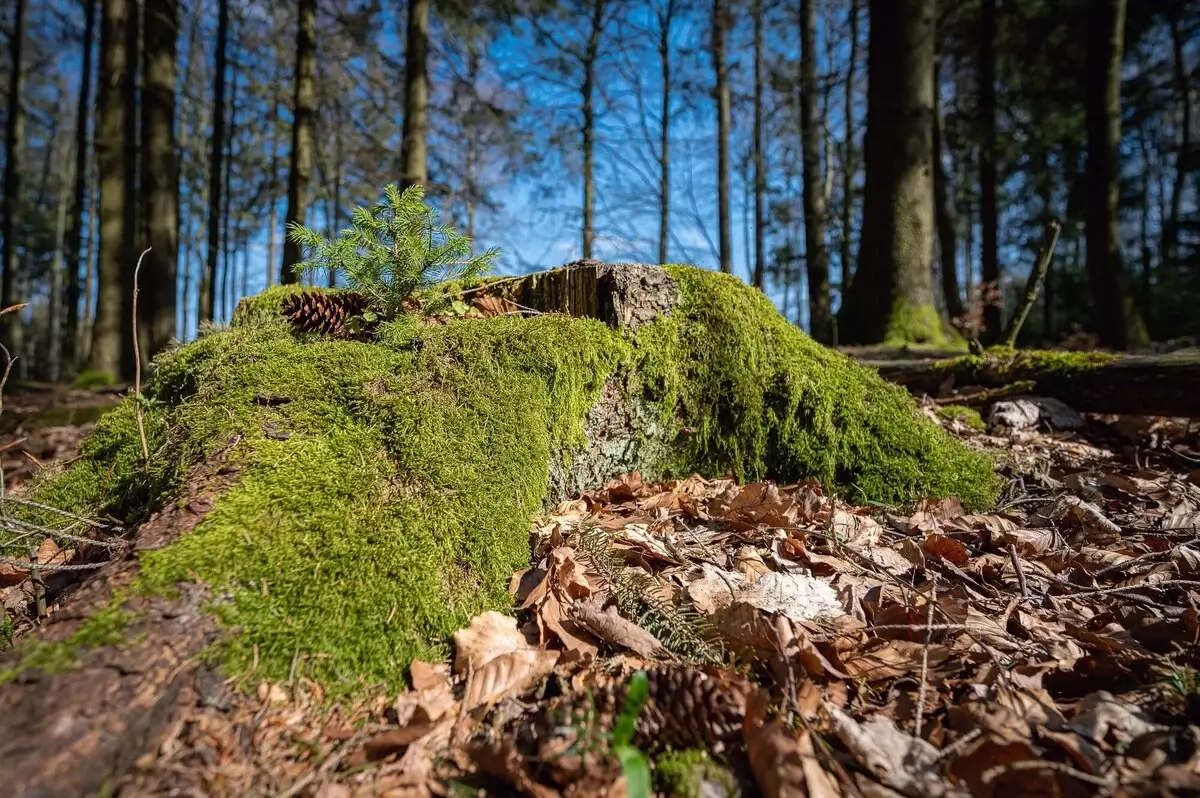
Once you reduce a tree down to a stump, it may seem like that is the end of the tree’s lifespan. However, this is not always the case. Sometimes, a tree can remain alive – with a little help from its neighbors.
Scientists recently found a kauri stump in New Zealand that is very much still alive. The stump, which is pictured above, was discovered while Sebastian Leuzinger was on a hike. Leuzinger noticed that this tree had live tissue, as opposed to the deadwood of a regular tree stump. Living stumps have been documented since 1833, but this is the first instance of this occurring (that we have found, at least) in the kauri tree (Ed Yong, The Atlantic).
This stump can only be kept alive one way: by exchanging nutrients and water with the trees surrounding it. The exchange of materials between trees is not a new phenomenon, trees have been found to use fungi to transfer nutrients from tree to tree. However, for this kauri stump to stay alive, it most definitely is connected to one or more trees via a root graft. In a root graft, the roots of two or more plants grow together and connect, allowing them to directly share resources without the help of fungi. Up to 150 species of trees are known to form root grafts (Kelly Mayes, Science).
Another thing that makes these living stumps remarkable is the anatomy of the tree. How it is set up, the tree pulls water up from its roots to its canopy. This action occurs as water evaporates off of the leaves, which then pulls up more water to take its place.
“The stump’s water flows at a fifth the speed of its neighbors’, but it does flow. The speed of that flow depends on what the surrounding trees are doing. If the neighbors’ sap flows faster, the stump’s sap flows slower. But if the neighbors reduce transpiration, whether at night or during heavy rain, the stump’s sap starts racing. This suggests that it isn’t just a passive part of its neighbors’ roots. Instead, it seemingly uses their downtime to gain more water” (Ed Yong, The Atlantic).
This is quite a remarkable find. While there is no evidence that all tree species can do this, and root grafting can only occur between two or more compatible species, this still has many implications for the tree service business. So if you have a stump in your yard that looks exceptionally alive or that you notice has living tissue rather than exclusively deadwood, you might have a living stump on your hands! A living stump does not pose any danger to your yard if it is left alone, and in fact, damage can occur to the living trees if root separation is attempted.
If you would like to know more about our Stump Grinding services, click here
Sources:
Mayes, Kelly. “Trees Share Water to Keep This Dying Stump Alive.” Science, 25 July 2019, www.sciencemag.org/news/2019/07/trees-share-water-keep-dying-stump-alive.
Yong, Ed. “The Stump That Didn’t Die.” The Atlantic, Atlantic Media Company, 29 July 2019, www.theatlantic.com/science/archive/2019/07/mystery-undead-tree-stump/594673/.
